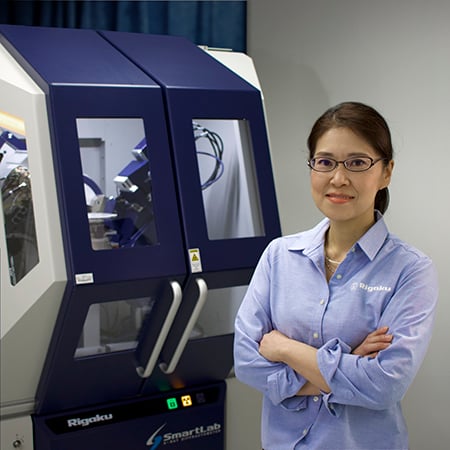Application Note B-XRD1102
Introduction
Pigments are used in various fields, such as paints, inks, cosmetics, foodstuffs, and so on. Among them, pigment ink has been used as the color component of inkjet printer ink for a long time because of its characteristics of high color stability, lightfastness, and gradation etc. Properties of pigment ink depend on the primary particle size. Pigment ink with small particle size has high transparency, high optical density, and stable dispersion, but it suffers from a decrease in light fastness, and clogging of the printer head due to aggregation between particles. Therefore, determining the primary particle size and size distribution of pigment ink is one of the most important processes in the pigment ink industry. Small-Angle X-ray Scattering (SAXS) and Ultra-Small-Angle X-ray Scattering (USAXS) observe the particle size and the size distribution, ranging from nanometer to several hundred nanometers in size. Since both methods are non-destructive, carried out with dispersion solutions without dilution, the particle size and the size distribution can be investigated irrespective of the state of materials. In this application note, we illustrate the particle sizes and the size distributions of pigment inks analyzed from scattering profiles obtained by USAXS.
Measurements and results
Figure 1 shows the scattering profiles of four colors of pigment inks, black, blue, red, and yellow, obtained by USAXS. A capillary of φ1 mm diameter was filed with pigment ink, and the scattering profile was measured for about 20 minutes. Since no fringe pattern is observed in the scattering profile, the four pigment inks are considered to have relatively wide size distribution. In addition, the slope of the scattering profile indicates that the yellow ink has the largest particle size and the red ink has the smallest particle size.
Figure 2 shows the results of the analysis of particle size and size distribution by the scattering profile and spherical model. The average particle size of the red ink is 54 nm and of the yellow ink is 72 nm. On the other hand, the relative standard deviation (RSD) of the particle size distribution of the yellow ink is 54% and shows a relatively narrow distribution. The red ink shows a wide distribution of 80%. In consideration of the particle size distributions of the pigment inks, particles exceeding 100 nm in size are also observed.
 Figure 1: Scattering profiles of pigment inks.
Figure 1: Scattering profiles of pigment inks.
 Figure 2: Average particle sizes and size distributions of pigment inks.
Figure 2: Average particle sizes and size distributions of pigment inks.

